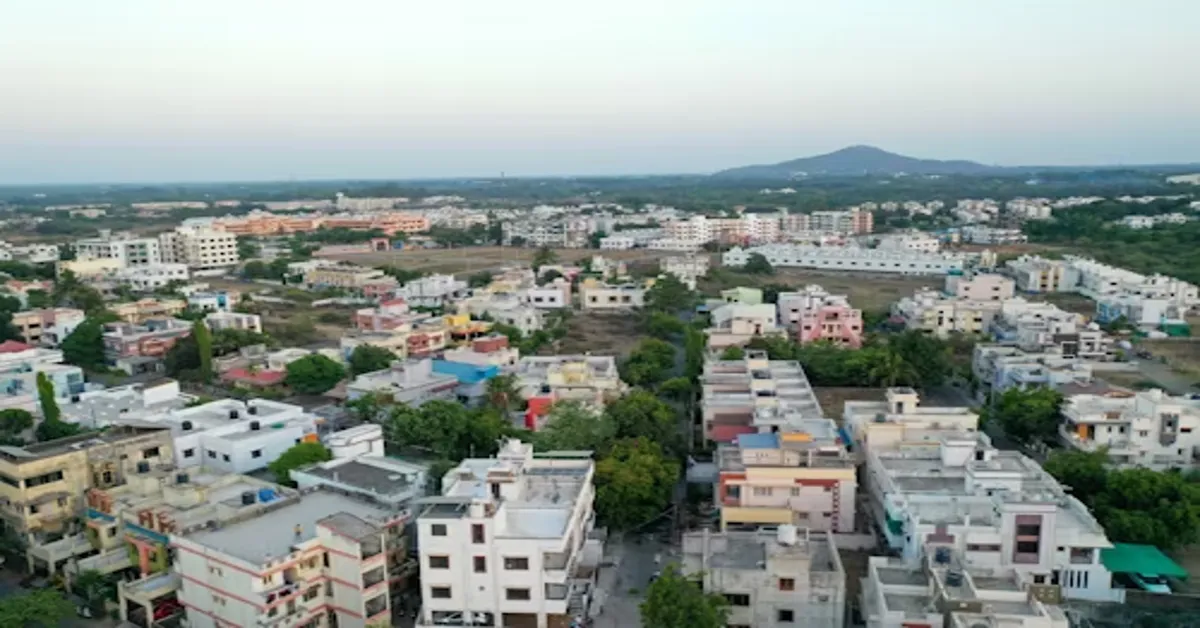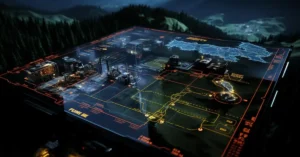Chovisawadi is a semi-urban locality nestled on the outskirts of Pune, Maharashtra, gradually transitioning from a modest rural setup to a fast-developing residential and commercial zone. Located within the administrative boundaries of Pimpri-Chinchwad Municipal Corporation (PCMC), Chovisawadi has been gaining attention for its strategic location, affordability, and growing infrastructure. It is situated close to several industrial hubs, educational institutions, and national highways, making it a favorable destination for both real estate investors and middle-income homebuyers. Despite being relatively lesser-known in comparison to Pune’s core neighborhoods, Chovisawadi holds significant potential due to its evolving urban framework, community life, and connectivity to the rest of the Pune Metropolitan Region (PMR). This article provides a comprehensive analysis of Chovisawadi’s historical background, geographical importance, real estate trends, educational and healthcare facilities, transportation links, and prospects for growth.
Historical and Cultural Background of Chovisawadi
Chovisawadi, like many localities on the fringes of metropolitan Pune, was originally a small village predominantly occupied by agrarian communities. The name “Chovisawadi” has traditional Marathi roots and reflects the cultural ethos of the region. For generations, local families engaged in farming, cattle rearing, and seasonal agriculture. The community followed a joint-family system and was deeply tied to traditions, festivals, and rituals celebrated in the rural hinterlands of Maharashtra. With the emergence of Pune as a major IT and industrial hub, the demand for affordable housing increased, leading to urban sprawl in surrounding areas. Chovisawadi, with its relatively flat terrain and proximity to major roads like Pune-Nashik Highway (NH-60), became a natural extension for urban development.
Over the past two decades, a slow but steady influx of migrants and real estate developers has transformed the character of Chovisawadi. Today, it represents a mosaic of the old and new—villagers who still maintain their farms coexist with professionals and small business owners who have moved here for better affordability and accessibility.
Geographic Location and Connectivity
Chovisawadi enjoys a strategic location in the northeastern periphery of Pune, falling under the jurisdiction of Pimpri-Chinchwad. It lies close to other localities such as Moshi, Alandi, Bhosari, and Charholi, which are also part of the PCMC area. One of the most significant advantages of Chovisawadi is its proximity to the Pune-Nashik Highway, which ensures seamless connectivity to both Pune’s central business districts and major industrial corridors.
The locality is around 20–25 kilometers from Pune Railway Station and about 18 kilometers from Pune International Airport. It is well-connected by public and private transport, including PMPML buses, shared auto-rickshaws, and private cabs. The proposed Metro Rail expansion in Pune may benefit Chovisawadi in the future by improving mass transport options. Additionally, the area’s closeness to Pune’s Ring Road project is expected to further boost connectivity and reduce travel time for daily commuters.
Residential and Real Estate Development
Real estate in Chovisawadi is in a transitional phase, evolving from small individual homes and chawls to gated apartment complexes and row houses. Property developers have started noticing the area due to increasing demand from budget-conscious buyers. The prices here are significantly lower compared to Pune’s more established localities like Kharadi, Wakad, or Baner, making it an attractive choice for first-time homebuyers and those seeking rental yields.
The residential developments include 1 BHK and 2 BHK apartments, builder floors, and a few plotted developments. The average property prices in Chovisawadi are still quite affordable, making it possible for middle-class families to own homes. Several under-construction projects by local developers aim to introduce modern amenities like elevators, parking spaces, CCTV surveillance, and landscaped gardens. These features, once considered luxury in the area, are becoming standard expectations due to the changing demographic profile of residents.
Moreover, with PCMC’s focus on urban development and infrastructure upgradation, Chovisawadi stands to benefit from improved roads, drainage systems, and water supply facilities. However, the development is not without challenges. Unauthorized constructions, unregulated urban sprawl, and inconsistent land documentation are issues that occasionally plague the real estate market here.
Commercial and Industrial Influence
Chovisawadi’s economic environment is strongly influenced by its proximity to industrial belts like Bhosari MIDC, Talawade IT Park, and Chakan industrial area. These regions host several major manufacturing units, automobile companies, and logistics firms, including names like Tata Motors, Bajaj Auto, and Mercedes-Benz. The spillover effect of industrialization has led to a rise in demand for rental housing by workers, supervisors, and small business operators.
Small-scale commercial setups such as grocery stores, hardware outlets, mobile shops, and eateries have mushroomed throughout Chovisawadi, catering to the daily needs of residents. Many local residents also engage in informal trade or operate service-based businesses such as welding, tailoring, and electrical repair shops. Weekly markets and street vendors form an integral part of the local economy, maintaining the semi-urban flavor of the locality.
While Chovisawadi does not yet host large malls or multiplexes, its proximity to Moshi and Bhosari ensures access to larger commercial establishments. The development of shopping complexes and branded retail outlets is expected in the coming years as disposable incomes rise and demand for lifestyle amenities grows.
Educational Institutions and Schools
Education in Chovisawadi is gradually expanding to meet the demands of the growing population. Currently, the locality hosts several primary and secondary schools, most of which follow the SSC and CBSE curriculum. Some notable schools in and around the area include Priyadarshani School, Nageshwar Vidyalaya, and Holy Angels School. These institutions offer basic education and are accessible to local and migrant families.
For higher education, students often travel to nearby regions like Bhosari, Pimpri, or even Pune city, where a large number of colleges and universities are situated. Technical education centers and polytechnic colleges are also accessible in Talawade and Chikhali, enabling students to pursue vocational training and diplomas in engineering and IT-related subjects.
Despite the presence of some reputable institutions, Chovisawadi still lacks advanced educational infrastructure such as international schools, large-scale coaching centers, or specialized institutions. This gap presents an opportunity for private educational ventures to invest in the area and fulfill the growing demand.
Healthcare Facilities and Public Services
Chovisawadi’s healthcare infrastructure is still in a developing phase. Currently, it offers access to a few local clinics, general physicians, dental care centers, and medical shops. Some small hospitals cater to common health issues, minor surgeries, and maternity care. However, for specialized treatments, diagnostic tests, or emergency care, residents often depend on multi-specialty hospitals in Pimpri, Bhosari, or Nashik Phata.
Prominent hospitals such as Aditya Birla Hospital in Chinchwad and DY Patil Hospital in Pimpri are within reachable distances, but commute time may be a concern during emergencies. The locality has some government healthcare centers, but they often suffer from under-staffing and limited resources. Over time, the increasing population will necessitate better health infrastructure, including ambulance services, diagnostic labs, and trauma care centers.
Public services like garbage collection, sewage management, and water supply are handled by PCMC. However, some areas still report irregular services or require local intervention for smooth operations. Street lighting, internal roads, and public sanitation are slowly improving, though a lot of work remains to be done to meet urban standards.
Lifestyle and Community Life
Life in Chovisawadi blends traditional values with modern aspirations. The local Marathi-speaking population forms the cultural core, but a mix of people from various regions of Maharashtra and northern India has added to the diversity. The social fabric is marked by strong community ties, with residents participating actively in Ganesh Utsav, Gudi Padwa, Diwali, and Holi. Local temples and cultural mandals organize regular programs, contributing to a sense of belonging and cultural continuity.
Markets in Chovisawadi are lively, with fresh produce, dairy, household items, and local crafts readily available. Weekly bazaars bring in vendors from nearby villages, adding vibrancy to the area. While large entertainment options are limited, nearby towns offer multiplexes, gaming zones, and dine-out places, which are easily accessible during weekends.
The community spirit in Chovisawadi is also seen in how neighbors interact—helping during festivals, family functions, and emergencies. Housing societies in newer developments are introducing resident welfare associations (RWAs) that help organize events, ensure cleanliness, and represent issues to local authorities.
Challenges and Developmental Needs
While Chovisawadi shows immense promise, it faces a range of challenges that need structured planning and civic intervention. The rapid, unregulated growth poses issues like illegal construction, lack of clear zoning, and environmental degradation. Drainage and stormwater management remain concerns during the monsoon season. Similarly, traffic congestion, especially near key junctions, is becoming more frequent due to narrow roads and increased vehicular movement.
Another concern is the lack of green spaces and recreational areas for children and the elderly. Urban planning must include parks, walking tracks, and public seating areas. Moreover, street vendors and unregulated parking often clog main roads, necessitating better urban management.
Finally, a coordinated development approach involving PCMC, real estate developers, and resident groups is essential to ensure that Chovisawadi grows sustainably and inclusively. This means preserving the cultural heritage while incorporating infrastructure that supports education, healthcare, business, and quality of life.
Future Prospects of Chovisawadi
Chovisawadi’s future appears promising due to its geographical advantages, real estate affordability, and integration with Pune’s expanding economy. The planned infrastructure projects like the Pune Ring Road, Metro Rail extensions, and industrial corridor enhancements are expected to boost the area’s profile. Over the next decade, Chovisawadi could potentially transform into a well-developed suburban pocket with a mix of residential, commercial, and institutional establishments.
As more people migrate to Pune in search of employment and affordable living, peripheral areas like Chovisawadi will play a pivotal role in accommodating urban growth. Smart city initiatives and digital infrastructure upgrades could bring in IT-enabled services, better transport systems, and enhanced civic amenities. With the right investment and governance, Chovisawadi can become a model for balanced development, preserving its cultural roots while embracing modernity.
ALSO READ: JK Banquets Prabhadevi: A Premier Venue for Events in Mumbai
Frequently Asked Questions (FAQs)
1. What is Chovisawadi known for?
Chovisawadi is known for its affordable housing, semi-urban character, and strategic location near industrial and IT hubs of Pune.
2. Is Chovisawadi a good place to invest in property?
Yes, due to low property prices, growing infrastructure, and proximity to highways and industrial areas, it’s an attractive investment location.
3. What are the transportation options in Chovisawadi?
Chovisawadi is connected by public buses, auto-rickshaws, and nearby major roads like Pune-Nashik Highway. Future metro connectivity is also planned.
4. Are there good schools in Chovisawadi?
There are several primary and secondary schools, but higher education institutions are mainly located in nearby towns like Pimpri and Bhosari.
5. What healthcare facilities are available in Chovisawadi?
Basic clinics and small hospitals are available locally, while larger multi-specialty hospitals are accessible in neighboring localities.









